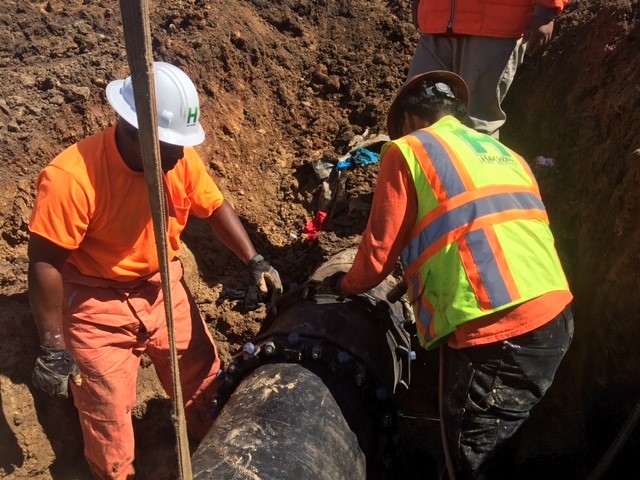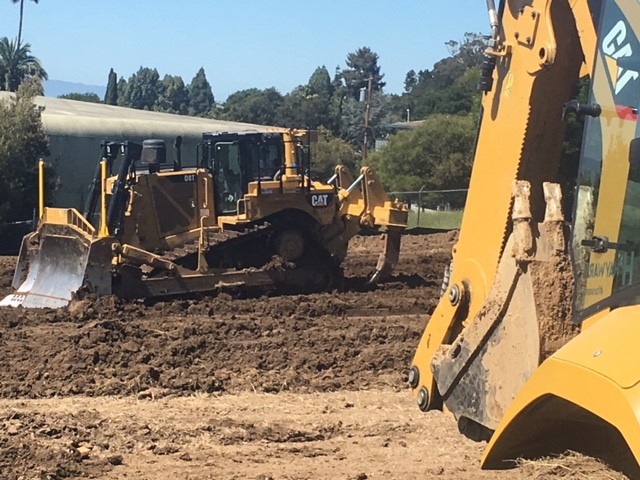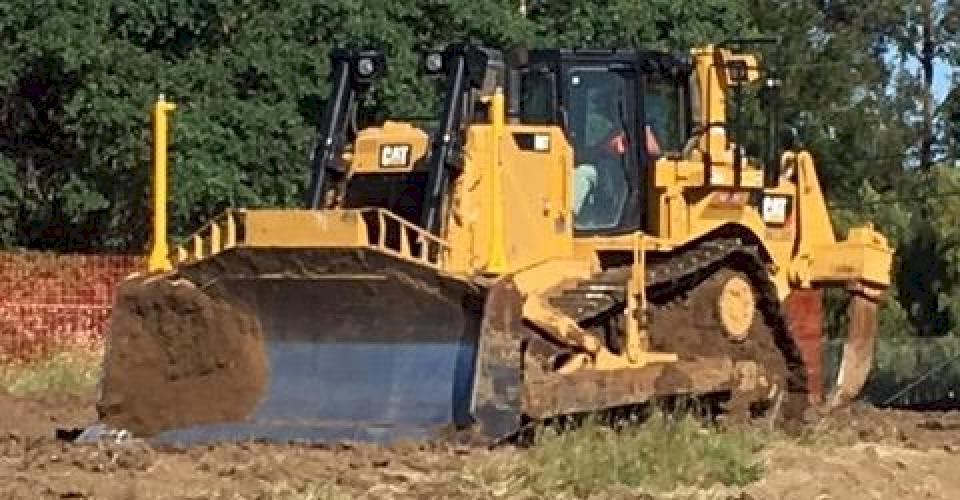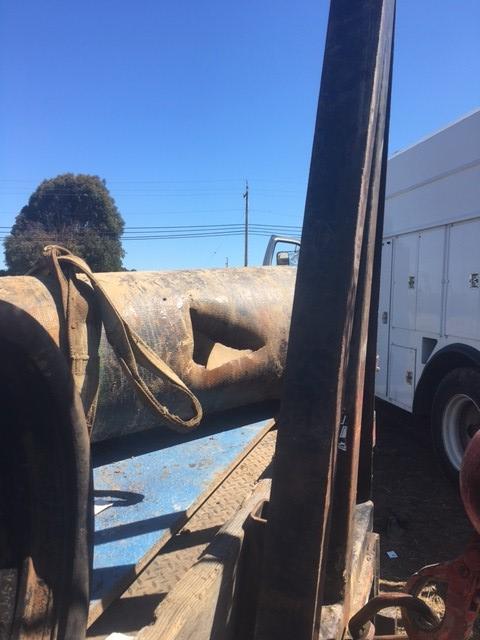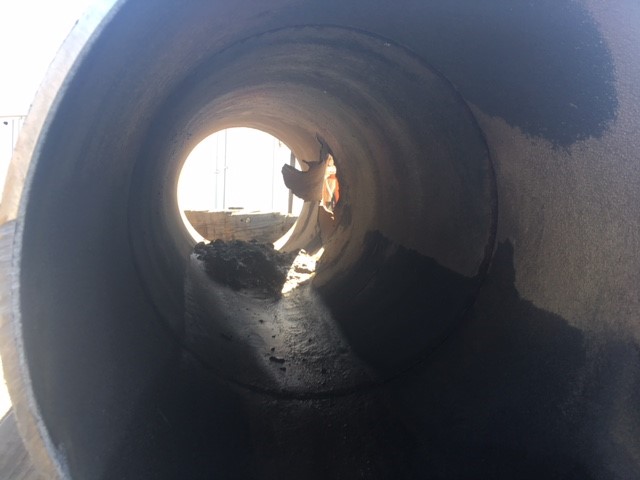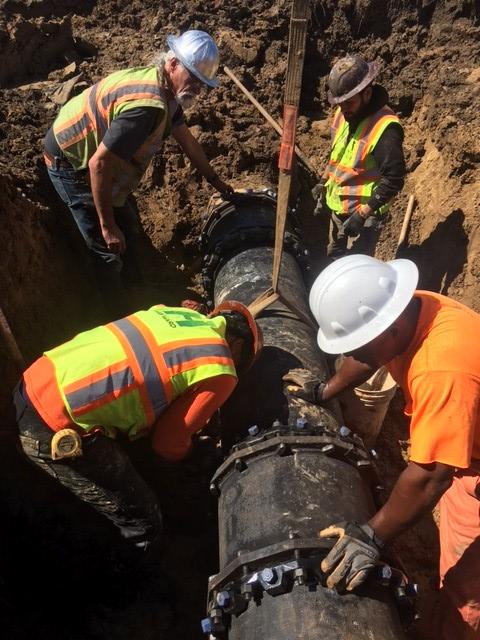The following article was recently featured in McWane Ductile’s Modern McWane magazine and tells of one water professional’s experience when faced with what could have been a catastrophic event, and the decisions he made to resolve a very large pipeline problem.
Working merrily along, then crunch!
The transmission main shown in the photos is in a large open field that is being developed. In the process of doing the rough earthwork, the D8 Dozer with its five-foot-long ripper tooth was plowing the area so that scrappers could eventually move in and recontour the property.
It was a normal day on the job while working for the city of Hayward, California. Later that morning, I got word that an earthmoving contactor hit our transmission main. My stomach turned because it is one of two feeds that supplies water all the way up the hills of Hayward in a series of 250-foot lifts (elevation gains).
A major leak? A steel pipe? Where do I get a replacement and how soon?
The thing that bothered me the most about the news was that our map books showed the line to be an 18-inch welded steel pipe. Welded steel pipe is a very good pipe material, but in the water world, it’s not a pipe that is readily available at a municipal supply yard or neighboring agency.
This could take some time to repair! What are my options?
The advantage to the welded steel pipe is that if the hole is small (dime size), you could easily weld on an outlet to make a simple repair.
The disadvantage is if the hole is large, it would likely require either a superior, but very time consuming, full penetration butt-weld to splice in a section of pipe or an inferior set of butt straps that can also be used to splice in a section.
The second option would never be tolerated in most of the industries that use steel pipe, and it would require a hand-hole to be added so that someone could attempt to mortar coat the interior of the pipe in the repair area.
The cost? And it could leak again in 5 years. Oh my!
The worst thing about repairing the welded steel pipe is that process is time consuming and prone to missing a spot, which means you suddenly have a corroded hole leak in 4 to 15 years — and then the repair process starts again.
Plus, the repair time would take days, unless you expedited the process at a cost of five times the expense.
Hit by a dozer? This is going to be a doozy!
Because the pipe was hit by a dozer, I knew the hole wouldn’t be small and would most certainly have a significant area around the hole/tear that is deformed, meaning the mortar lining would be shot for some distance to either side with a segment needing to be cut and welded.
We took a closer look.
The pipe was exposed quickly because the line had about 135 psi, helping clear a portion of the pipe, and the developer had the earthmoving equipment on site. The field was a mess, but at least the pipe was exposed.
Did you just say ductile iron? Hallelujah!
I was about to start the miserable task of finding pipe when I got word that the pipe was ductile iron, which made replacing it a much more feasible task. I asked my folks in the field to absolutely confirm that this was the case. They confirmed it, and I almost started doing cartwheels.
There’s still a chance to save this mess!
This news meant that I now had a fighting chance to find a piece of ductile, the solid sleeves and mega lug kits that I needed laying around that day. I immediately called my beloved acquaintance, Scott Silverthorn, Municipal Supply sales guy extraordinaire, and asked him to find the parts I needed.
While he didn’t have the materials in his yard, it took him less than half an hour to locate the materials at another Bay Area water agency. Within hours, the materials were being picked up from across the bay and delivered to me. In the irony of ironies, the pipe and fittings came from my former employer, North Coast County Water District!
The toughness of ductile iron came through.
When I arrived on site, I noted the damaged section of pipe. Ductile iron is wonderful because it is generally tougher than Superman’s knee cap, but if it yields, it does so in a very localized area.
The areas to the immediate upstream and downstream portion of the damage were perfectly intact. The mortar lining was even remarkably intact in the areas immediately adjacent to the damaged section. In fact, if I had a repair clamp, I could have easily thrown that around the pipe and had a legitimate fix.
We’ll get this fixed in short order!
Because I had the pipe, I could just as easily do a full repair in very short order with nothing more than a couple of gas-powered saws, ratchet wrenches, open-end wrenches, and minimal skill sets.
If you can read a tape measure, make a cut with the saw, and tighten bolts, you can make a 100 percent perfectly legitimate 100-year repair on the pipe. Once the materials arrived on site, my team completed the entire repair in three hours — start to finish.
What if this were some other material?
If this were a polyethylene pipe, it would have drawn itself down and necked down to some strange outside diameter for a very large section of the pipe, and the repair couldn’t have been done in this amount of time.
If this were a C900 pipe, the pipe would have shattered, and instead of having a hole in the pipe that already released enough water to be a bummer, it would have been a full break and drained a significant part, if not all, of my 4-million-gallon reservoir that the transmission main feeds into.
The damage to the construction site would have been catastrophic as the high-pressure water would become a massive hydro-excavator.
If it were a bar-wrapped cylinder pipe, I would have had to order custom transition coupling that would cost me days and many thousands of dollars in shipping and expedited fees alone, and then take 10-plus hours to repair the fragile pipe.
The bottom line is that the ductile pipemade this bad news story turn into a minimalistic bump in the road in the water world of Hayward!
Need assistance with your water infrastructure project?
McWane Ductile offers multiple services for our customers extending far beyond manufacturing ductile iron pipe. From design to installation, we take great pride in providing education and assistance to water professionals throughout the water and waste water industry.
Check out all our digital offerings:

